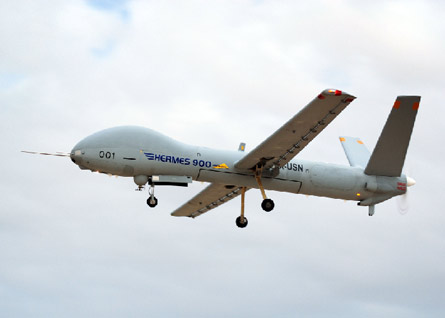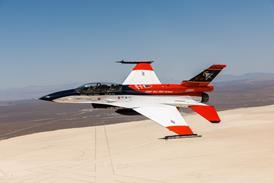Elbit Systems' Hermes 900, its largest unmanned air vehicle, made a 15min first flight in strong winds on 9 December in Kziot, southern Israel.
Elbit's Hermes 900 has a 15m (49ft) wingspan, a 970kg (2,130lb) maximum take-off weight and is powered by a 115hp (85kW) Rotax 914 engine for a 300kg payload capability and endurance of 40h.
It has an "independent" automatic take-off and landing capability, allowing the medium altitude-long-endurance UAV to land on non-instrumented runways.
 |
|---|
©ElbitElbit Systems' Hermes 900 |
Hermes 900 is also equipped with what Elbit calls "a secured redundant" line-of-sight datalink and a redundant satellite communication beyond-line-of-sight link.
The Hermes 900 is controlled by Elbit's universal ground control station, which the company says can control two UAVs at the same time. Elbit has teamed with Thales and L-3 MAS Canada for the UAV and is offering it to the Canadian army.
On Elbit's website it shows the Hermes 1500, which is larger than the 900, but the company has discontinued that product.
Elbit plans to complete platform testing early next year, says Haim Kellerman, Elbit's co-general manager of unmanned aircraft systems. Platform testing will be followed immediately by a series of payloads tests, which includes Elbit's full range of electro-optical sensors, plus signals intelligence payloads.
Kellerman declined to comment on questions about weaponising the Hermes 900.
The aircraft is scheduled to be available to enter service in the second half of 2010, Kellerman says. So far, Elbit has not announced a launch customer for the aircraft. But Elbit expects the Israeli defence forces to convert its unit operating Hermes 450 to the 900 variant, he says.
"[Customers] want to see the platform," Kellerman says. "Interest will mature now, and that will be turned into orders."
Source: Flight International
















